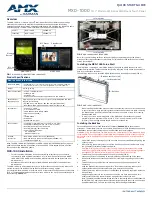
Page 10 of 28
M434/500 Prototype Commissioning Manual
PN W453101Rev- Nov-02-1998
Calibrate Radius/Moment
Up to seven points may be calibrated for each boom-telescoping mode. These points must include fully
retracted and fully extended. Intermediate points should be chosen to be where individual sections of the
boom start to telescope and/or other sections stop telescoping as the boom is extended.
For booms that exhibit an appreciable amount of flexibility or droop, it may be necessary to include an
extra point to improve accuracy, especially if there is a long distance between obvious points of
calibration. This is usually pertinent for long proportional booms, which might only require a fully retracted
and fully extended calibration.
Some booms exhibit a sudden droop near to fully telescoped, this is often due to the design and fitting of
wear pads inside the boom, which allow sections to hang on each other when near to their fully
telescoped limit. Though this has little affect on main boom radius accuracy, flys/jib radius may be
affected by this characteristic. It is essential here to add an extra calibration point at about 90% of the
boom extension.
Calibrate Radius/Moment by following the procedure in the calibration manual. Take care to accurately
measure the radius at each calibration point. Using a single part of line will aid this.
When entering the Tare load in the calibration routine, it is usually a good idea to add a little to the hook
weight. Adding 100 pounds (or 50 Kilos) will help guarantee a slightly positive load reading in all
operating configurations.
NOTES:











































